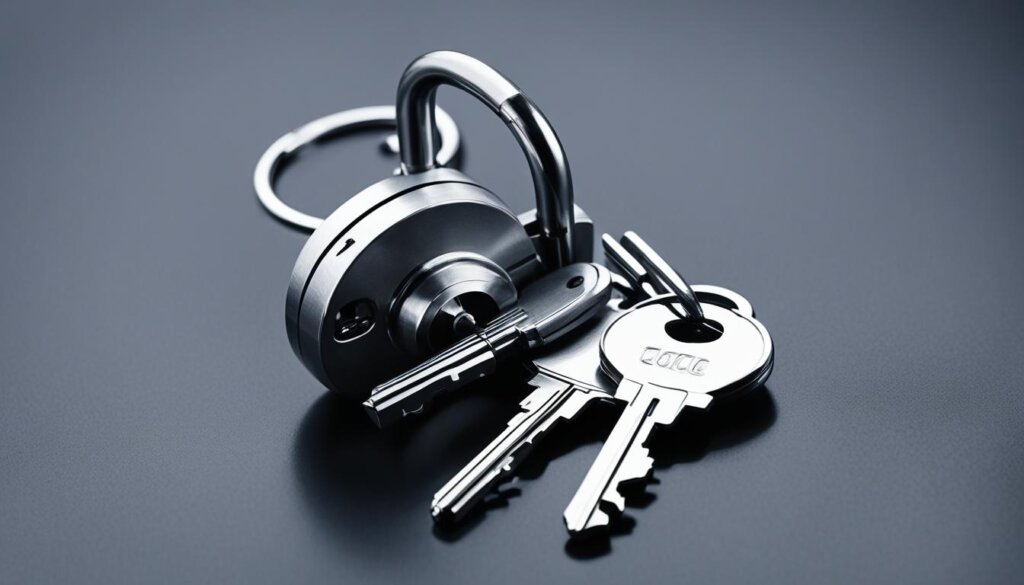Table of Contents
Welcome to our comprehensive guide on HIPAA compliance for healthcare practices. In today’s digital age, patient data protection is of utmost importance. The Health Insurance Portability and Accountability Act of 1996 (HIPAA) sets the standards for safeguarding sensitive health information and ensuring its confidentiality, integrity, and availability.
As a healthcare practice, it is crucial to understand and comply with HIPAA regulations to protect your patients’ data and maintain their trust. This guide will provide you with essential information on HIPAA compliance, including the key requirements and best practices to follow.
By adhering to HIPAA standards, you can establish a secure environment for handling patient information and reduce the risk of data breaches. Let’s dive in and explore the world of HIPAA compliance together.
Overview of HIPAA Regulations
HIPAA, the Health Insurance Portability and Accountability Act, encompasses two crucial regulations known as the Privacy Rule and the Security Rule. Ensuring compliance with these regulations is vital for safeguarding protected health information (PHI) and electronic protected health information (e-PHI).
The Privacy Rule establishes standards for the protection of individually identifiable health information. It applies to all forms of health information and sets guidelines for the use and disclosure of PHI by covered entities.
The Security Rule focuses specifically on e-PHI and sets security standards for covered entities. This rule requires the implementation of administrative, technical, and physical safeguards to ensure the confidentiality, integrity, and availability of e-PHI.
To maintain HIPAA compliance, covered entities must adhere to both the Privacy Rule and the Security Rule. This comprehensive approach guarantees the privacy and security of individuals’ health information, whether in physical or electronic form.
Understanding the difference between the two regulations is essential for healthcare organizations as they strive to protect PHI and e-PHI from unauthorized use or disclosure.
“The Privacy Rule and the Security Rule work together to create a comprehensive framework for protecting sensitive health information. By adhering to these regulations, covered entities can establish trust with patients and maintain the integrity of their healthcare practices.”
Benefits of Complying with HIPAA Regulations
Complying with HIPAA regulations offers several advantages for healthcare practices:
- Improved patient trust and confidence in the security of health information.
- Reduced risk of costly data breaches and potential fines.
- Protection against lawsuits and legal liabilities.
- Enhanced reputation and competitive advantage in the industry.
- Compliance with ethical responsibilities to prioritize patient privacy.
By prioritizing HIPAA compliance, healthcare organizations can not only meet legal requirements but also demonstrate their commitment to safeguarding patient data.
The Intersection of Privacy and Security
The Privacy Rule and the Security Rule intertwine to establish a comprehensive framework for protecting health information. While the Privacy Rule focuses on controlling the use and disclosure of PHI, the Security Rule ensures the implementation of technical safeguards to protect e-PHI.
Although distinct, these regulations share a common goal: protecting patient data. Healthcare organizations must navigate the intersection of privacy and security to establish robust measures that safeguard health information from both internal and external threats.
Who is Covered by HIPAA
HIPAA regulations apply to a range of entities involved in the healthcare industry. These entities, known as covered entities, have specific obligations to comply with HIPAA standards. The covered entities include:
- Health plans: This category includes health insurance companies, HMOs, and company health plans.
- Healthcare clearinghouses: These are entities that process and facilitate the transmission of healthcare information.
- Healthcare providers: This includes doctors, hospitals, clinics, pharmacies, nursing homes, and other healthcare professionals or organizations that electronically transmit patient health information.
“Covered entities and their business associates play a crucial role in ensuring the privacy and security of patient information.”
In addition to covered entities, there are also business associates who handle protected health information on behalf of covered entities. Business associates can include contractors, consultants, and other partners who have access to patient information while providing services to covered entities. These business associates are also required to comply with HIPAA regulations to protect patient data.
Together, covered entities and their business associates have a shared responsibility to safeguard patient information and maintain compliance with HIPAA standards.
| Entity Type | Examples |
|---|---|
| Health Plans | Health insurance companies, HMOs, company health plans |
| Healthcare Clearinghouses | Entities that process and facilitate healthcare information transmission |
| Healthcare Providers | Doctors, hospitals, clinics, pharmacies, nursing homes, healthcare professionals, and organizations |
| Business Associates | Contractors, consultants, partners handling protected health information on behalf of covered entities |
Key Requirements for HIPAA Compliance
Achieving HIPAA compliance requires covered entities and their business associates to implement various safeguards. These safeguards are essential for protecting electronic health information and ensuring the privacy and security of patient data.
Administrative Safeguards
One of the key requirements for HIPAA compliance is the implementation of administrative safeguards. These safeguards involve developing and implementing policies and procedures that govern the use and disclosure of protected health information (PHI). Covered entities must designate a security official responsible for managing HIPAA compliance and conducting regular risk assessments to identify potential vulnerabilities.
Technical Safeguards
Technical safeguards are crucial for protecting electronic health information. Covered entities must implement measures such as access controls, encryption, firewalls, and audit controls to ensure the confidentiality, integrity, and availability of PHI. These safeguards help prevent unauthorized access and mitigate the risk of data breaches.
Physical Safeguards
Physical safeguards focus on securing the physical infrastructure that houses health information. Covered entities must have policies and procedures in place to control access to facilities and workstations where PHI is stored. This includes measures such as video surveillance, visitor access controls, and secure storage areas for electronic devices containing PHI.
Risk Analysis
Regular risk analysis is a fundamental requirement for HIPAA compliance. Covered entities must conduct thorough assessments of their organization’s security vulnerabilities and develop strategies to mitigate these risks. Risk analysis helps identify potential threats and vulnerabilities to PHI, allowing for the implementation of appropriate safeguards.
Employee Training
Employee training plays a critical role in HIPAA compliance. Covered entities must provide comprehensive training programs to ensure that employees understand the importance of protecting patient data and the specific policies and procedures in place. Training should cover topics such as data privacy, security awareness, and handling PHI appropriately.
By implementing these key requirements, covered entities and their business associates can achieve and maintain HIPAA compliance, ensuring the protection of patient data and adherence to regulatory standards.
Maintaining HIPAA Compliance
HIPAA compliance is an ongoing effort that requires constant vigilance and proactive measures. Healthcare organizations must establish robust procedures to effectively respond to incidents, conduct regular self-audits, keep policies and procedures up to date, provide comprehensive employee training, and review business associate agreements. By actively maintaining HIPAA compliance, organizations ensure the continual protection of patient information and mitigate potential risks.
Incident Response
Having a well-defined incident response plan is crucial in maintaining HIPAA compliance. This plan outlines the steps to be taken in the event of a data breach or security incident. It helps healthcare organizations minimize the impact of such incidents, safeguard patient information, and meet the HIPAA requirement for incident response. It is recommended to include in the plan clear communication channels, responsibilities, and protocols to swiftly address any potential breaches or incidents.
Self-Audits
Regular self-audits are essential to ensure ongoing compliance and identify any potential gaps or weaknesses in security practices. By conducting thorough assessments, healthcare organizations can identify areas that need improvement and take corrective actions promptly. Self-audits enable continuous monitoring and evaluating the effectiveness of implemented security measures, helping maintain a robust and up-to-date compliance program.
Policies and Procedures
Periodically reviewing and updating policies and procedures is vital in maintaining HIPAA compliance. Healthcare organizations must ensure that their policies align with the latest regulatory requirements, technological advancements, and industry best practices. Policies and procedures should address key areas such as data privacy, security incident management, access controls, encryption, and employee training. Regular reviews and updates help healthcare organizations stay compliant and adapt to the evolving threat landscape.
Employee Training
Comprehensive employee training programs are crucial for maintaining HIPAA compliance. Healthcare organizations should provide regular training sessions to educate employees about their responsibilities regarding patient privacy and security. Training programs should cover topics such as handling sensitive information, recognizing potential risks, incident reporting, and the importance of adhering to policies and procedures. By keeping employees well-informed, healthcare organizations can enhance their overall security posture and reduce the likelihood of compliance breaches.
Business Associate Agreements
Regularly reviewing and updating business associate agreements is an integral part of maintaining HIPAA compliance. These agreements formalize the relationship between covered entities and their business associates who handle protected health information. Healthcare organizations should ensure that their agreements align with current regulations, covering all necessary security and privacy requirements. Ongoing review and updates of these agreements help ensure that business associates remain accountable for protecting patient information in compliance with HIPAA regulations.
| Best Practices for Maintaining HIPAA Compliance |
|---|
| Implement a robust incident response plan |
| Conduct regular self-audits to identify and address security gaps |
| Review and update policies and procedures to align with regulatory requirements |
| Provide ongoing comprehensive employee training on HIPAA regulations |
| Regularly review and update business associate agreements |

By prioritizing incident response, self-audits, updated policies and procedures, employee training, and business associate agreements, healthcare organizations can effectively maintain HIPAA compliance. These ongoing efforts contribute to safeguarding patient information, protecting against potential breaches, and ensuring the highest standards of privacy and security in healthcare.
Partnering with a HIPAA Compliance Provider
Achieving and maintaining HIPAA compliance can be complex and time-consuming for healthcare practices. That’s where a HIPAA compliance provider like Compliancy Group can make all the difference. By partnering with a trusted compliance solution, healthcare practices can streamline their compliance efforts and receive expert guidance every step of the way.
Compliancy Group offers a comprehensive compliance solution that is tailored to the unique needs of healthcare organizations. Their platform helps track and document compliance efforts, ensuring that all necessary requirements are met. Additionally, they assist with audits, providing peace of mind and reducing the burden on healthcare professionals.
Working with a Compliance Coach from Compliancy Group allows healthcare practices to tap into a wealth of knowledge and resources. These experts are well-versed in HIPAA regulations and can provide invaluable guidance to navigate the requirements effectively. With their support, healthcare practices can confidently protect patient information, mitigate risks, and demonstrate ongoing compliance.
FAQ
What is HIPAA?
HIPAA stands for the Health Insurance Portability and Accountability Act of 1996. It is a set of regulations that require healthcare practices to comply with standards for protecting the privacy and security of certain health information.
What are the key regulations of HIPAA?
HIPAA consists of two key regulations – the Privacy Rule and the Security Rule. The Privacy Rule establishes standards for the protection of individually identifiable health information, while the Security Rule sets security standards for electronic protected health information (e-PHI).
Who is covered by HIPAA?
HIPAA applies to various entities, including health plans, healthcare clearinghouses, and healthcare providers who transmit health information electronically. These entities, known as covered entities, are obligated to comply with HIPAA regulations.
What are the requirements for HIPAA compliance?
Achieving HIPAA compliance requires covered entities and their business associates to implement various safeguards. These include administrative safeguards, technical safeguards, and physical safeguards. Additionally, conducting regular risk analysis, providing employee training, and maintaining documentation are vital for HIPAA compliance.
How to maintain HIPAA compliance?
Maintaining HIPAA compliance requires procedures for incident response, self-audits, updating policies and procedures, providing employee training, and reviewing business associate agreements. These measures ensure ongoing protection of patient information and mitigate potential risks.
Can I partner with a HIPAA compliance provider?
Yes, partnering with a HIPAA compliance provider, such as Compliancy Group, can streamline the compliance process and provide expert guidance. A comprehensive compliance solution can track and document compliance efforts, assist with audits, and provide ongoing support. Working with a Compliance Coach ensures that healthcare practices have the necessary resources and knowledge to navigate HIPAA requirements effectively.







